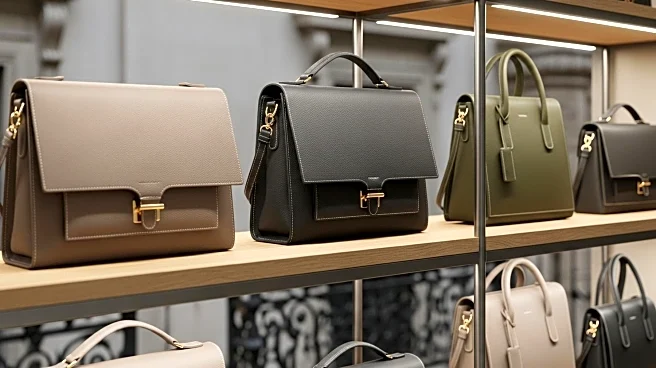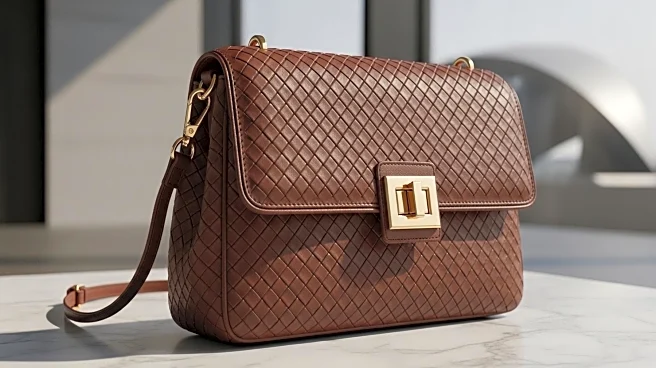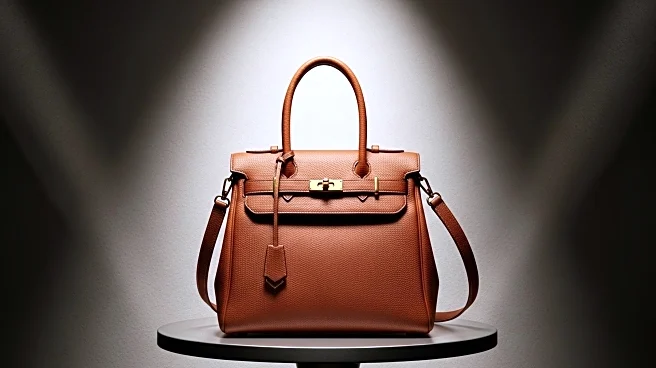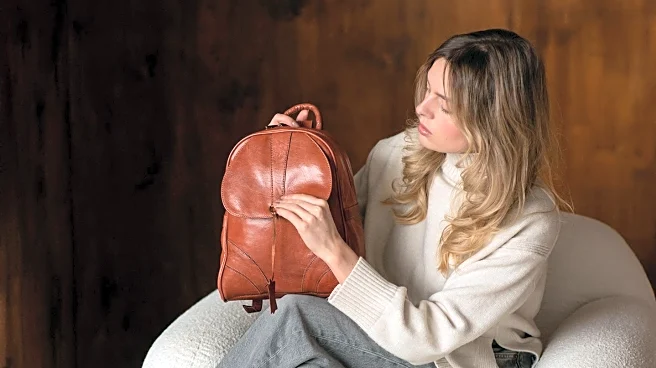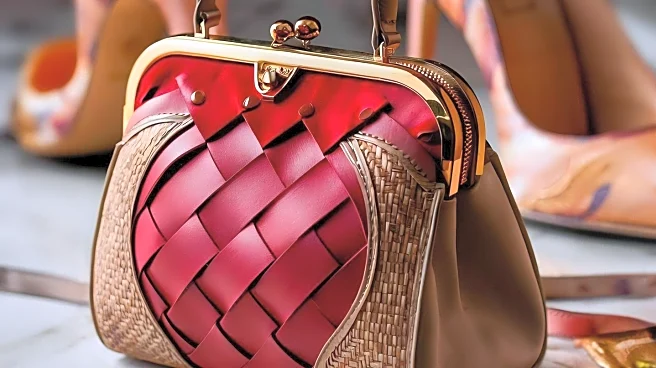What's Happening?
British designer Louise Trotter made her debut for Bottega Veneta during Milan Fashion Week, presenting a collection focused on 'soft functionality.' The collection featured structured garments in soft, draped fabrics, including leather coats, wide-shouldered suits, and voluminous fur-style tops. Trotter, who succeeded Matthieu Blazy, drew inspiration from the brand's early years and its expansion into the U.S. The collection emphasized tailoring and the use of the softest leathers, satin, and wool, with large bags crafted from the brand's iconic 'intrecciato' woven leather. Trotter's designs reflect a blend of classic formality and modern liberation, celebrating the brand's 60th anniversary with an art-infused debut.
Why It's Important?
The debut of Louise Trotter's collection for Bottega Veneta is significant as it marks a new era for the brand under her creative direction. Her focus on 'soft functionality' and the absence of logos on bags highlight a shift towards craftsmanship and self-assuredness in luxury fashion. This approach may influence other luxury brands to prioritize quality and design over branding. Additionally, Bottega Veneta's resilience in sales amidst a slowdown in spending by Chinese consumers suggests a strong market position, potentially impacting the strategies of other brands within the Kering group.
What's Next?
As Bottega Veneta continues to navigate the luxury market, the brand may further explore the themes of liberation and self-assuredness in its future collections. The success of Trotter's debut could lead to increased collaboration with artists and designers, enhancing the brand's appeal. The fashion industry will likely watch closely to see how Bottega Veneta's strategies influence consumer behavior and the broader luxury market, especially in light of economic challenges.
Beyond the Headlines
Trotter's debut collection for Bottega Veneta not only celebrates the brand's heritage but also reflects broader cultural shifts towards individuality and self-expression in fashion. The absence of logos on bags challenges traditional luxury branding norms, potentially sparking discussions on the role of identity and authenticity in consumer choices. This development may encourage other brands to reconsider their branding strategies and focus on the intrinsic value of their products.

